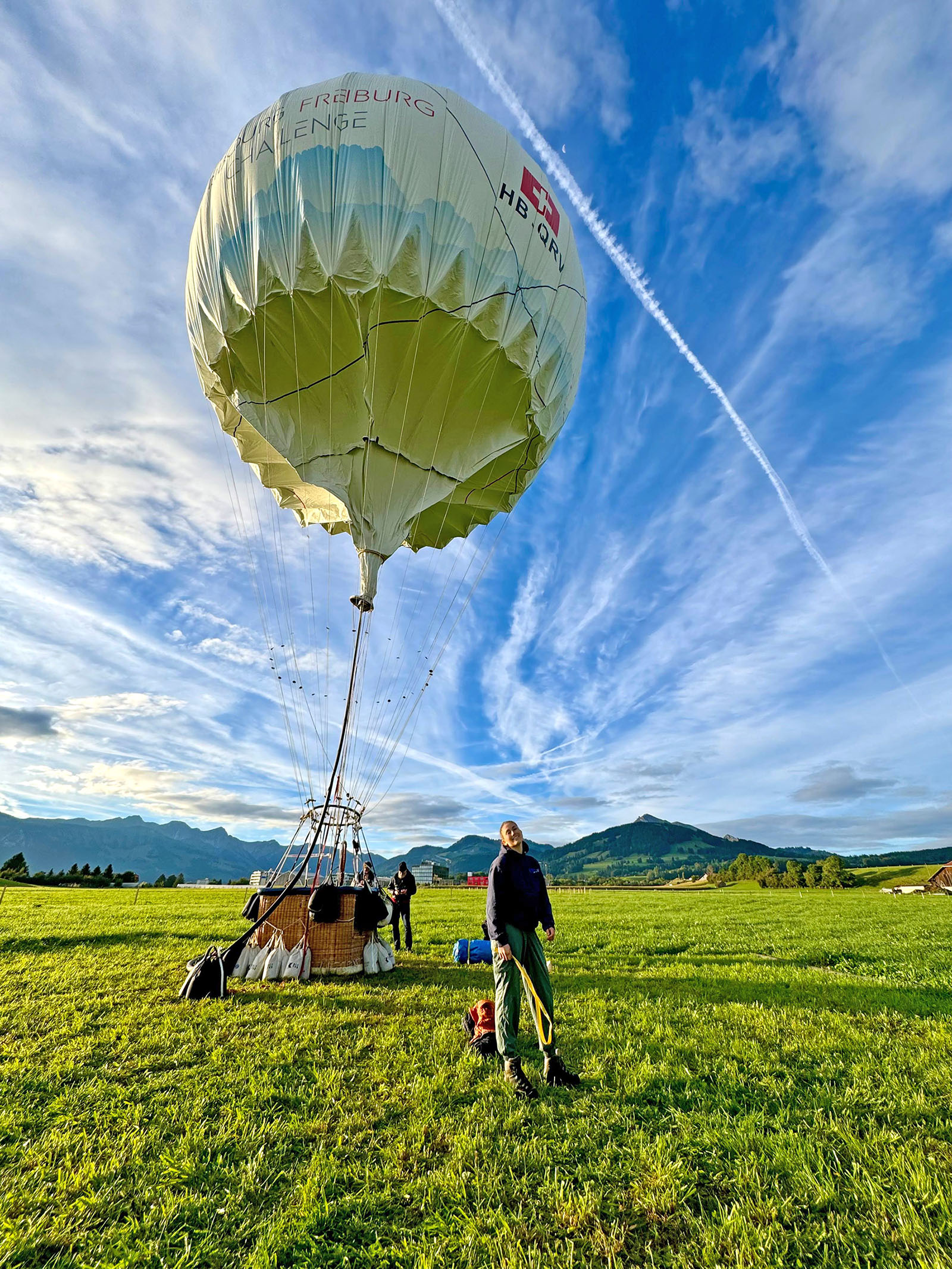Solar-generated hydrogen balloon takes flight in Gruyère, Switzerland
An innovative gas balloon flight took place this morning 25 September 2024 in the region of Gruyère, Switzerland. What sets this flight apart is its unique power source: the hydrogen used to fly the balloon was generated from water using solar energy only.
Renowned Swiss pilots Laurent Sciboz and Nicolas Tièche, champions of the 2019 Coupe Aéronautique Gordon Bennett (the FAI Long Distance Gas Balloon World Championships) were at the helm of the balloon.
Laurent Sciboz said:
“This flight could pave the way for future net-zero flights across Europe. It represents a step forward in sustainable aviation and energy production: Traditional gas balloons usually use energy from non-renewable resources. This “green hydrogen” approach offers a more sustainable alternative to decarbonise a substantial part of balloon flights activities including hot air ballooning in the coming years.”
The Technology Behind the Flight

This remarkable achievement showcases the potential of renewable energy in aviation. The process involved in producing the ‘green hydrogen’ is as follows:
- Solar panels capture energy from the sun
- This solar power is used to split water molecules through electrolysis
- Hydrogen gas is produced as a result
- The hydrogen is used to inflate and power/fly the balloon
Sciboz and Tièche's flight was made possible through a collaboration with local firm Gruyère Hydrogen Power (GHP) and the Swiss startup GRZ Technologies for the innovative solid-state hydrogen storage container.
Normally, gas balloons rely on hydrogen transported by road from factories far away, but this balloon took off directly next to the Gruyère Energie site where the GHP plant, which produces hydrogen directly on site, was built.

Solar-powered flights
This balloon flight is notable for its use of hydrogen produced with electricity from the sun only.
At the recent 67th FAI Coupe Aéronautique Gordon Bennett in Münster, Germany, an other event marked a progressive step towards eco-friendly ballooning. A brand new Westfalen balloon was inflated, baptised and launched using 'green hydrogen'. Notably, all gas balloons participating in the race utilised hydrogen derived from sustainable resources such as solar and wind power.
Solar-powered flights have a history dating back to the 1970s. The unmanned AstroFlight Sunrise achieved the first successful solar-powered flight in 1974, while the first manned solar-powered flight took place in 1979.
The 21st century brought even more ambitious projects, notably with Solar Impulse. Solar Impulse 1, completed in 2009, made significant achievements and records including the first international solar-powered flight from Switzerland to Belgium in 2011. Its successor, Solar Impulse 2, completed a record round-the-world journey between 2015 and 2016, covering more than 41.000 km in over 555 hours of flight.
More recent developments include the Airbus Zephyr, a high-altitude, long-endurance unmanned aerial vehicle powered by solar energy. In 2021, the Airbus Zephyr Programme set a world record by flying for 454h30m without landing.
In the realm of ballooning, Leticia Noemi Marqués broke multiple Duration and Distance world records in 2020 aboard the Aerocene solar balloon which transformed solar radiation into heat by means of its dark coloured membrane.
Photo and video credit: Fribourg Challenge Team

